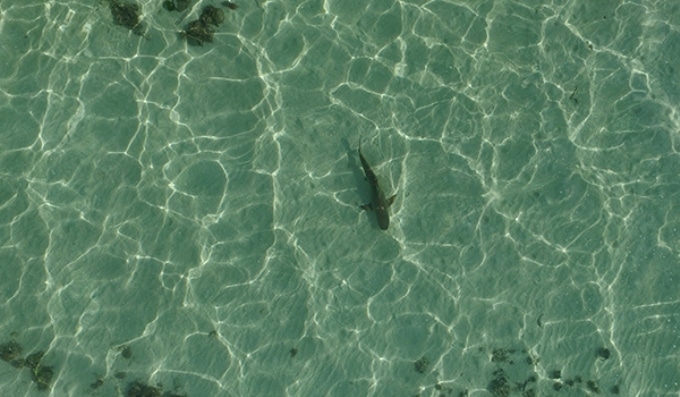Nov 23 2018
An innovative tracking method, which uses drones to track the behavior of sharks in up to 5 m-depths of water, could increase the safety of divers, surfers, and beachgoers.
 Blacktip Reef Shark (Image credit: Dr Raoult)
Blacktip Reef Shark (Image credit: Dr Raoult)
Even today, not much is known about how and why sharks use shallow environments, but the latest study has demonstrated a promising potential for employing unmanned aerial vehicle, or UAV, technology to gain a better insight on shark behavior in areas where human interactions take place, for example, beaches.
According to Dr Vincent Raoult, project lead and University of Newcastle marine ecologist, the movement tracking method offers a non-invasive and economical option to collect data that would otherwise be hard to obtain.
A slow rise in the number of global shark-human interactions has led to calls for a greater understanding of shark behaviour in areas where these encounters are likely to occur. Currently, researchers rely on acoustic or satellite tags to gather movement data on sharks and other marine vertebrates. These methods are expensive, cause stress to the animals and only capture environmental factors such as depth and temperature. UAV technology offers exciting potential to further explore the way marine vertebrates use areas such as lagoons or shallow coastal areas and, in doing so, assist with the management of these animals.
Dr Vincent Raoult, Marine Ecologist and Project Lead, University of Newcastle
At Heron Island on the Great Barrier Reef, the small-scale study was able to effectively track 14 sharks, including four Blacktip Reef sharks and nine Epaulette sharks, for 3 to 11 minutes.
Within the scientific zone, scientists manually piloted the drone to observe sharks in real time, and after each event, examined the captured footage in more detail. With the help of the on-board global positioning system (GPS) integrated into the drone, speed and movement were determined at numerous times per second which returned considerably greater accuracy when compared to acoustic tracking.
These latest findings also defied earlier assumptions regarding the feeding habits of Epaulette sharks.
Epaulette sharks are generally thought to not move much during low tides, however, we found they were highly lively during these times and were actively looking for food across relatively wide ranges. Observations of natural feeding events like this are quite rare, which suggests this approach might be a great tool to learn more about natural feeding behaviours as sharks did not appear to be bothered by the drone. Assessing this in real time, in combination with other techniques like acoustic tagging and existing geo-referenced habitats, will enable researchers to infer immediate relationships between habitat and behaviour.
Dr Vincent Raoult, Marine Ecologist and Project Lead, University of Newcastle
It was only recently that UAVs have been used for other marine behavioral studies, but novel uses of drone technology for ecological applications may continue to emerge in the near future.
Larger data sets are required to confirm these initial findings, but this study demonstrates that UAV-based tracking is a tool that could allow us to understand and predict movement and behaviour patterns on a larger scale and for a wide range of marine species. These understandings could inform strategies to help prevent shark attacks from species typically involved with incidences of human interaction, such as Great Whites and Bull Sharks.
Dr Vincent Raoult, Marine Ecologist and Project Lead, University of Newcastle
The study was conducted in association with Macquarie University and the Sydney Institute of Marine Science, and the complete findings have been reported in the journal, Drones.